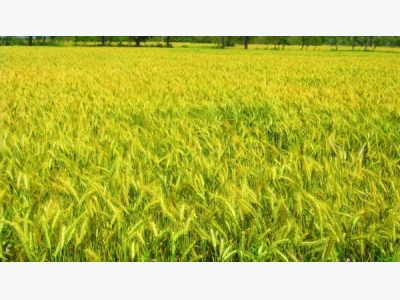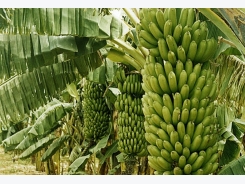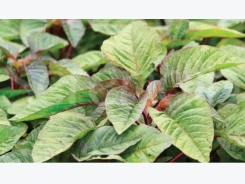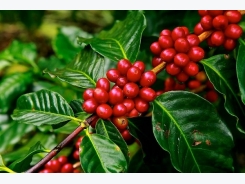Wheat Cultivation Information Guide

Introduction to Wheat Cultivation:- Wheat is cereal grain crop grown in most of the countries. Wheat is grown in larger areas than any other food crops. Wheat can be grown as winter and spring crop. Today, commercial cultivation of wheat in many countries is playing major role in the economy of respective countries. There are many botanical classification systems used for wheat species. What was originated (native to) in Levant region. Wheat is the leading source of vegetable protein in daily human food. Wheat has higher protein content than other major cereals like maize and rice. Wheat is considered as one of the staple foods in today’s world and is being used for many purposes such as bread, biscuit, cookies, cakes, breakfast, cereal, pasta, couscous, noodles. Wheat is also being used industries for making biofuels and alcoholic beverages. China is top producer of wheat production in the world. In India, Uttar Pradesh (UP) is largest state of wheat production. In the following article, let us talk about “how to grow wheat”.

Wheat Grain.
Scientific Name or Botanical Name of Wheat:- Triticum aestivum.
Family Name of Wheat:- Poaceae.
Genus of Wheat Plant:- Triticum L.
Common Names of Wheat:- Koring (Afrikaans), Blat (Catalan), Tarwe (Dutch), Weizen (German), Hveiti (Icelandic), Улаан буудай (Mongolian), Pszenica (Polish), grurë (Albanian), pšenica (Bosnian), Nisu (Estonian), Σιτάρι / sitári (Greek), Cruithneacht (Irish), mil (Korean), Qamħ (Maltese), ग╠ँ(Nepali), Trigo (Portuguese, Spanish), qamḥ (Arabic), pšeníca (Bulgarian), 小麦 / xiǎomài (Chinese), Triticum (Italian), Hvete (Norwegian), ขา้วสาลี/ kâao săa-lee (Thai), Lúa mì ( Vietnamese), Ցորեն ( Armenian), gyum (Burmese), Pšenica (Croatian), Vehnät (Finnish), ḥīṭah (Hebrew), コムギ (Japanese), Kvieši (Latvian), Grâu (Romanian), (Sinhalese), Ngano (Swahili), Gwenith (Welsh), សវលី(Cambodian), Pšenice (Czech), Blé (French), pčénica (Macedonian), Vetesläktet (Swedish), Buğday (Turkish), ukolo (Zulu), 小麦 (Cantonese), Hvede (Danish), ხორბალი / ȟorbali (Georgian), Búza (Hungarian), Pokok Gandum (Malay), 小麥 (Taiwanese), arupa (Sanskrit).
Wheat in Indian Languages:- Wheat is called with different names in different languages of India.
- English – Wheat
- Gehun – Hindi
- Godhumai – Tamil
- Godhambu – Malayalam
- Godhumalu – Telugu
- Godhi – Kannada
- Gom – Bengali
- Gahama – Oriya
- Gehun – Urdu
- Ghau – Gujarati
- Govu – Konkani
- Gahu – Marathi
- Gehun – Manipuri
- Gahama – Oriya
- Kamak – Punjabi
- Ku’Nu’Kh – Kashmiri
World Top 10 Production Countries of Wheat:- The following are the top ten production countries of wheat.
- China
- India
- United States
- France
- Russia
- Australia
- Canada
- Pakistan
- Germany
- Turkey
India Top 10 Wheat Production States:- The following are the top 10 production states of wheat production in India.
- Uttar Pradesh (UP)
- Punjab
- Madhya Pradesh (MP)
- Haryana
- Rajasthan
- Bihar
- Gujarat
- Maharashtra
- West Bengal
- Himachal Pradesh
Health Benefits and Uses of Wheat:- The following are some of the health benefits of wheat.

Health Benefits of Wheat.
- When eaten wheat as the whole grain, it is an excellent source of multiple nutrients and dietary fiber.
- Wheat consumption can aid in weight loss and controls obesity
- Wheat is an excellent food for to prevent from diabetes (Type-2)
- Wheat is good at preventing from constipation problems
- Wheat is good for heart health and protects against coronary diseases
- Wheat helps in improving body metabolism
- What helps in reducing chronic Inflammation
- Wheat can prevent from Gallstones
- Eating whole wheat grain assures a healthy lifestyle
- Wheat can protect from breast cancers
- Wheat is helpful in preventing asthma (in children)
Nutrition values in Wheat: Manganese, Selenium, Magnesium, Iron, Zinc Phosphorus, Copper, and Potassium.
Varieties (Cultivars) of Wheat:- There are many local and improved varieties of wheat are grown across Asian region. These varieties vary for type of cultivation. You may need to contact local agriculture department for suitable high yielding (hybrid) variety that is suitable for your climate and region.
Climate Requirement for Wheat Cultivation:- Wheat crop can be grown in wide range of climatic conditions. However, cool, dry and clear weather is ideal for its growth and better yield of the crop. The average annual rainfall for wheat cultivation is about 800 to 1600 mm. The best temperature range for crop growth is about 7°C to 22°C. Low temperatures, frost, hot and humid climatic conditions are harmful to the crop and they can drastically reduce the crop yield. (Hot and Humid conditions encourage diseases such as rust, root rot).
Soil Requirement for Wheat Cultivation:- Wheat crop can be grown in many soil types, a well-drained, fertile clay loamy soils having moderate water holding capacity are ideal for irrigated wheat cultivation. In case of dry wheat crop (rainfed crop), heavy soil with open structure which can retain the monsoon rainfall for longer period is good enough for wheat cultivation. Black soils also very well suited for wheat cultivation. Commercial scale farmers should go for soil test for finding suitability of soil.
Propagation, Seed Rate and Seed Treatment in Wheat Cultivation:- Propagation of wheat crop is done by seeds. Seed rate depends on variety (cultivar), cultivation method (rain-fed or irrigated) and sowing method. On an average, seed rate of wheat varies from 50 to 130 kg/ha. However, late sowing may require more seed rate for avoiding any reduction in crop yield.

Sprouting – Germination of Wheat Seed.
To prevent from seed borne diseases and soil borne diseases, wheat seed should be treated with Carbendazim or Thiram at 2 grams/kg of seeds, 1 day (24 hours) before sowing in the field.
Land Preparation in Wheat Cultivation:- Land preparation for wheat cultivation depends on type of cultivation method. This will vary from irrigated crop to rainfed crop. However, wheat plantation/crop requires well-pulverized soil for uniform seed germination. This crop does not prefer clods in the field. For increasing the soil fertility, well-decomposed farm yard manure should be applied during land preparation. It is recommended supplement 15 tonnes of FYM or any garden/field compost on the unploughed field.
- Land Preparation for Rainfed Cultivation of Wheat: During monsoon 3 to 4 harrowing should be carried out to remove any weeds from previous crops and to conserve the moisture. Deep ploughings should be given by tractor for proper field fine tilth. At the end of monsoon 1 shallow harrowing should be carried out and compaction of soil should be done with the help of planker just before sowing the seed.
- Land Preparation for Irrigated Cultivation of Wheat: Using local tractor or country plough, the field should be cross-ploughed after harvesting the rainfed crop (previous crop). Well, for irrigated conditions, 3 to 4 harrowing should be carried out crushing the clods. Remove any weeds from the previously cultivated crop to make the field weed free and clean. For proper seed setting and proper germination, one pre-soaking irrigation should be given to the seed bed or field just 3 to 4 days before sowing the seed. Required harrowing & planking should be given to prepare final seed bed for sowing the seed. Prepare proper irrigation channels between rows after forming the beds.
Growth Stages or Life Cycle of Wheat Plant:- The following are the various stages of wheat plant.
Pre-establishment stages:
- Pre-emergence: Germination of seeds
- Emergence: Germinating seeds produce coleoptiles above the soil surface
Vegetative stages:
- Seedling: The young plants start establishing larger root systems
- Crown root stage (Crown root Initiation C.R.I): This coincides with 3 or 4 leaf stage of wheat plant.
- Tillering: What Plant starts producing crown and branch out into tillers from their base at soil surface
- Jointing: The plant starts elongating when the nodes start developing above the crown node
Reproductive stages:
- Booting: The upper most wheat leaf swells out into flag holding the spike into it.
- Heading: The spike starts emerging out from the leaf sheath
- Flowering: Anthesis of florets and fertilization of ovaries take place.
Post-anthesis stages:
Filling (Grain forming): After fertilization, the ovaries start elongating in ovules or seed passing through milk, soft-dough and hard-dough stages.
Maturity: The colour of glumes changes and kernels become fairly hard.
Wheat Classification:-The following are the wheat classification (Indian).
- Emmer Wheat (Triticum dicoccum schub L.)
- Macroni Wheat ( T.durum Desf.)
- Common Bread Wheat ( T. vulgare Host)
- Indian Dwarf Wheat (T.spherococcum Mihi.)
- Triticum aestivum
Sowing and Spacing in Wheat Cultivation:- In commercial production, wheat can be sown in the filed through drilling or broadcasting methods. Usually drills are attached to tractors or bullocks to ensure uniform seed sowing. The space requirement in wheat cultivation depends on variety (cultivar) and the sowing method. The ideal row spacing of 15 to 22.5 cm is followed depending on the situation. In case of late irrigated wheat crop, a row spacing of 15 to 18 cm is followed. When it comes to depth of sowing,
Dwarf cultivars (varieties) should be planted at a depth of 5 cm -6 cm. The tall varieties of wheat crop (conventional) requires a sowing depth of 8 cm – 9 cm. Avoid deep sowing in moist soils and it will be ok in case of dry and rough soils.
Irrigation in Wheat Cultivation:- Timely irrigation and avoiding water stress in crucial stages of wheat cultivation is very important. Frequency of irrigation depends on soil type, climatic conditions and crop age (stage).
- In case of Rain fed crop: There is no need of irrigation because the wheat crop can be grown on residual moisture in soil & dew formed during winter. However, in case soil dryness, 1 or 2 irrigations should be provided especially irrigation at crown root initiation and flowering stage may be given to obtain good yield.
- In case of Irrigated crop: First and foremost, pre-soaking irrigation should be given 4 to 5 days before sowing the seed for better wheat seed sprouting (germination) or better crop stand. In this crop usually, 5 to 6 irrigations are required at an intervals of 20 to 24 days. However, there are some critical stages of wheat cultivation where one should avoid the water stress. The first irrigation should be carried out at the crown root initiation stage (C.R.I), 20-25 days after sowing in the field. Subsequent irrigation should be given at the time of late tillering, late jointing (Earring or heading stage), flowering, milk and dough stages (grain formation). The yield can be drastically reduced if the irrigation is not provided at C.R.I (Crown root initiation stage).
Manures and Fertilizers in Wheat Cultivation:- Wheat crop responds very well to manures and fertilizer applications
| With assured fertilizer supply | Under fertilizer constraints | For the late sown irrigated wheat crop |
| Nitrogen (N) @ 80 – 120 kg/ha | Nitrogen (N) @ 60-80 kg/ha | Nitrogen (N) @ 60-80 kg/ha |
| Phosphorus (P2O5) @ 40- 60 kg/ha | Phosphorus (P2O5 @ 30-40 kg/ha | Phosphorus (P2O5) @ 30-40 kg/ha |
| Potash (K2O) @ 40 kg/ha. | Potash (K2O) @ 20-25 kg/ha. | Potash (K2O) @ 20-25 kg/ha. |
How to apply? Total Phosphorus (P2O5) and potash (K20) and half of the nitrogen (N) should be applied at the time of sowing. Remaining quantity of Nitrogen (N) should be applied at the time of C.R.I (crown root initiation).
Intercultural Operations in Wheat Cultivation:- In any orchard, giving proper and timely intercultural operations such as weed control and other operations are essential.
Crop Rotation in Wheat Cultivation: The following crop rotations can be followed in wheat cultivation.
Weed Control: In wheat cultivation, weeds should be controlled by 2 to 3 hand-weedings / hoeing. First one should be carried out 1 month after sowing and the subsequent operation should be carried out 40 to 45 days after sowing. Herbicides can be used to control weeds in wheat cultivation.
- Sorghum or maize-rapeseed- wheat-green gram
- Pigeon pea-wheat-black gram
- Pearl millet-wheat-green gram Paddy
- Wheat-cowpea or black gram
- Soybean-wheat-green gram
- Maize-rapeseed- wheat-green gram
- Paddy-wheat-green gram / black gram
- Maize-potato-wheat-cowpea
Mixed cropping of wheat: mixed cropping of wheat with mustard, gram, linseed is common practice in most of wheat cultivation regions.
Pests and Diseases in Wheat Cultivation:- Controlling pests and diseases is essential in wheat crop cultivation for health produce and high yields.
- Pests: Aphids, Brown Wheat Mites, Army Worm, Legume Pod-borer, and Termites are some common pests found in wheat cultivation. For symptoms and control measures of these pests in wheat crop, contact your local agriculture department.
- Diseases: Leaf Rust/Brown Rust, Stem Rust, Stripe Rust/Yellow Rust, Loose Smut, Powdery Mildew are common diseases found in wheat cultivation. For symptoms and control measures of these diseases in wheat crop, contact your local agriculture department.
Note: Your local Horticulture is a good source for finding suitable solutions for controlling pests and diseases in wheat cultivation.
Harvesting in Wheat Cultivation:- Wheat crop can be harvested when the wheat grains become hard and leaves (straw) becomes dry and brittle. Every variety has different harvesting times and type of cultivation also makes the difference in harvesting periods. Usually, Rain fed crops becomes ready for harvesting before irrigated crop. When a yield is compared in both cases, an irrigated crop yields more when compared to rainfed crop.

Ready to Harvest Wheat Crop.
The harvesting of wheat crop can be done by sickle by cutting crop close to ground level or using harvesting machines. After harvesting the crop, it should be dried for 4 to 5 days on the threshing floor and then threshed by thresher (power-driven). Cleaning and grading and transporting to local markets or local mills are the post-harvesting activities in wheat cultivation.
Yield in Wheat Cultivation:- Yield of any agricultural crop depends on many factors such as variety (cultivar), cultivation type (irrigated or rain fed), climate, soil type and other crop management practices.
For Local Varieties:
- Rainfed crop – 3 to 5 quintals/ha.
- Irrigated crop – 10 to 12 quintals/ha.
For Hybrid/ Improved varieties:
- Rainfed crop – 15 to 25 quintals/ha.
- Irrigated crop– 30 to 40 quintals/ha.
Có thể bạn quan tâm
Phần mềm

Phối trộn thức ăn chăn nuôi

Pha dung dịch thủy canh

Định mức cho tôm ăn

Phối trộn phân bón NPK

Xác định tỷ lệ tôm sống

Chuyển đổi đơn vị phân bón

Xác định công suất sục khí

Chuyển đổi đơn vị tôm

Tính diện tích nhà kính

Tính thể tích ao hồ



 Sorghum Production Information Guide
Sorghum Production Information Guide  Coffee Cultivation Information Guide
Coffee Cultivation Information Guide